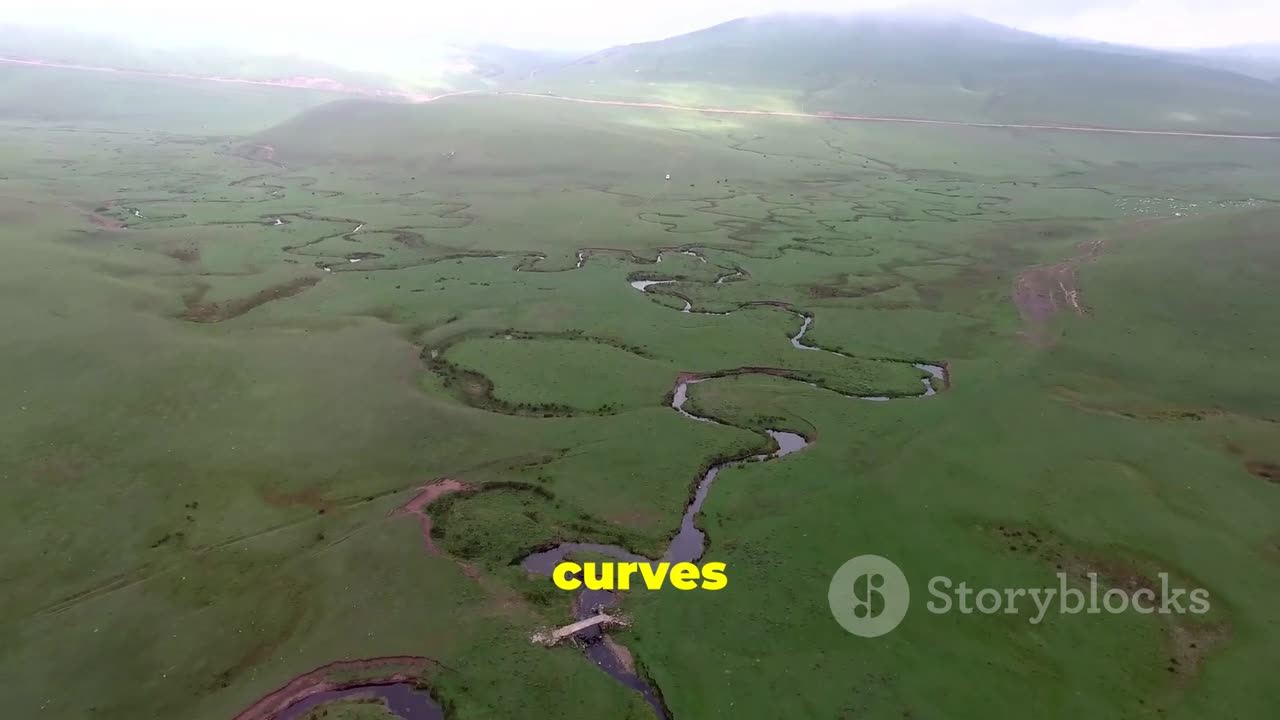Premium Only Content

The Curvature Chronicles: Unraveling the Mystery of Meandering Rivers
Certainly! Rivers, those sinuous ribbons of water that carve their way across landscapes, have fascinated humans for millennia. Their meandering paths, winding through valleys and plains, seem almost purposeful. But why do rivers curve instead of flowing straight? Let's embark on a journey to explore the fascinating science behind river bends.
## **The Dance of Water and Earth: River Meandering**
### **1. The Curious Origins of River Bends**
Rivers don't start out curved. When a new river forms, it typically begins as a relatively straight channel. However, over time, these channels develop bends, twists, and loops. Here's why:
- **Disturbances and Time**: Imagine a serene stream flowing across a plain. Now introduce a disturbance—a family of muskrats burrowing into one side of the streambank. As they create their cozy home, the bank weakens. Eventually, it collapses, allowing water to rush into the newly formed hollow. This process continues, and the hollow grows larger. As water flows into it faster, the stream on one side speeds up, while the other side slows down.
- **Sediment Transport**: Fast-moving water carries sand-sized particles along with it. As the water slows down on one side of the stream, these particles settle to the bottom, gradually making the river shallower. The opposite side, with its faster flow, remains deeper.
- **Formation of the First Curve**: The fast-moving water sweeps around the newly formed curve with enough momentum to slam into the opposite bank. This impact causes another curve to form. And then another. And another. The process repeats until the river resembles a winding, snake-like path.
### **2. The Universal Pattern of River Meanders**
Remarkably, rivers worldwide tend to follow a similar pattern. The length of one S-shaped curve tends to be approximately six times the width of the channel. In other words, rivers exhibit fractal behavior—tiny, bendy streams are miniature versions of their larger counterparts.
### **3. The Oxbow Lakes and Detached Curves**
As long as nothing obstructs these curves, rivers become even bendier over time. Eventually, the curves may bump into themselves. When that happens, the river's channel takes the straighter path downhill, leaving behind detached oxbow lakes. These abandoned loops can be seen anywhere liquid once flowed—even on Mars.
## **Conclusion: The Artistry of River Curves**
So, the next time you gaze at a meandering river, appreciate the delicate dance between water and Earth. Rivers curve because of disturbances, sediment transport, and the inexorable passage of time. Their sinuous paths tell stories of muskrats, erosion, and the ever-changing canvas of our planet.
Whether flowing through lush forests, arid deserts, or bustling cities, rivers remind us that nature's artistry is rarely linear—it's a graceful, winding masterpiece. 🌊🌎
[Watch this MinuteEarth video for a visual explanation](https://www.sciencealert.com/watch-why-do-rivers-curve) ¹.
[Learn more about river meandering](https://phys.org/news/2022-08-dont-rivers-straighten.html) ³.
---
I hope you enjoy this exploration of river bends! If you'd like further details or have any other questions, feel free to ask. 😊🚀
Source: Conversation with Copilot, 9/9/2024
(1) WATCH: Why Do Rivers Curve? - ScienceAlert. https://www.sciencealert.com/watch-why-do-rivers-curve.
(2) Why don't rivers straighten out over time? - Phys.org. https://phys.org/news/2022-08-dont-rivers-straighten.html.
(3) Why Do Rivers Curve? {Geology Science Experiment}. https://frugalfun4boys.com/why-do-rivers-curve-geology-science-experiment/.
(4) Why don’t rivers straighten out over time? - CORDIS. https://cordis.europa.eu/article/id/441996-why-don-t-rivers-straighten-out-over-time.
-
 2:58:32
2:58:32
Slightly Offensive
8 hours ago $43.08 earnedHas Trump FAILED US? The ABSOLUTE STATE of The Right Wing | Guest: Nick Fuentes
66.9K37 -
 1:37:05
1:37:05
AlaskanBallistics
3 hours ago $0.67 earnedI Love This Gun PodCast #16
13K3 -
 2:59:26
2:59:26
Twins Pod
12 hours agoEMERGENCY PODCAST WITH ANDREW TATE! - Twins Pod - Special Episode - Andrew Tate
139K143 -
 2:52:01
2:52:01
Jewels Jones Live ®
2 days agoTRUMP SECURES BORDER | A Political Rendezvous - Ep. 113
68.8K36 -
 25:02
25:02
marcushouse
1 day ago $40.62 earnedStarship Just Exploded 💥 What Went Wrong This Time?!
149K76 -
 12:00
12:00
Silver Dragons
1 day agoBullion Dealer Reveals Best Silver to Buy With $1,000
91.9K9 -
 12:58
12:58
NinjaGamblers
15 hours ago $14.37 earnedIs This The BEST Way to Win At Roulette? 😲
135K13 -
 1:01:54
1:01:54
CharLee Simons Presents Do Not Talk
2 days agoCALIFORNIA'S DONE!
91.1K39 -
 7:33
7:33
MudandMunitions
1 day agoUnboxing My FIRST Revolver! Smith & Wesson 442 .38 Special and What’s Coming Next for the Channel
120K16 -
 1:01:05
1:01:05
Trumpet Daily
1 day ago $12.64 earnedGermany Started Two World Wars and Now Wants Nuclear Weapons - Trumpet Daily | Mar. 7, 2025
96.1K90